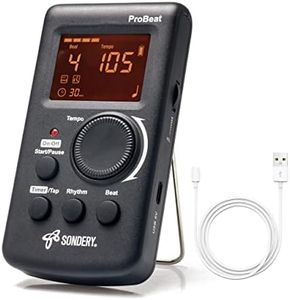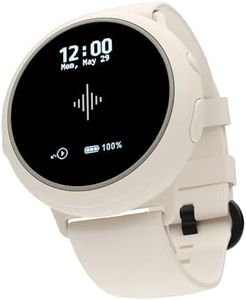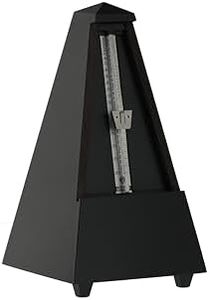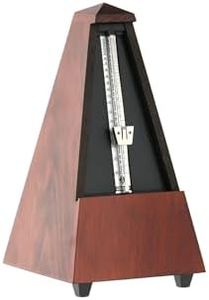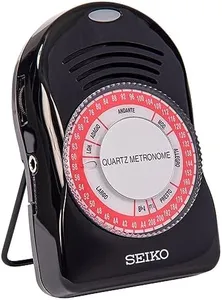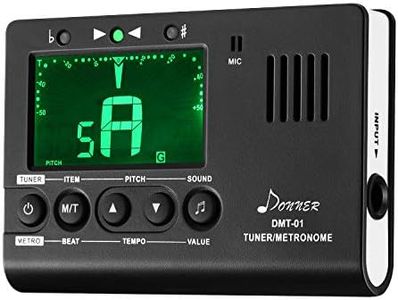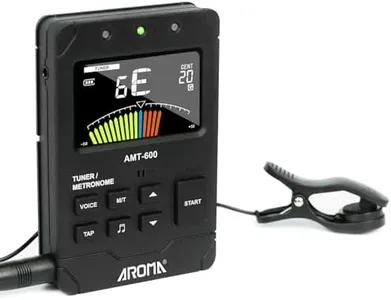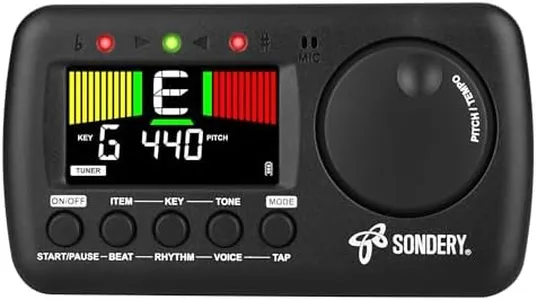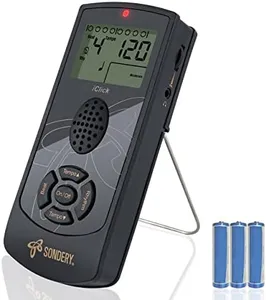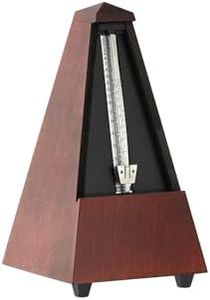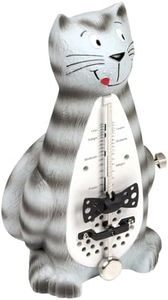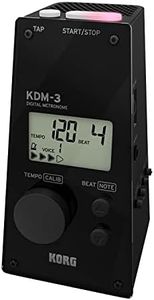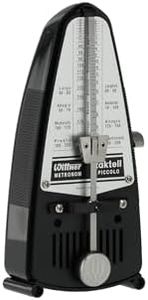10 Best Metronomes 2025 in the United States
Our technology thoroughly searches through the online shopping world, reviewing hundreds of sites. We then process and analyze this information, updating in real-time to bring you the latest top-rated products. This way, you always get the best and most current options available.

Our Top Picks
Winner
Sondery Digital Metronome Rechargeable English Vocal Counting with Timer Function for Piano Guitar Drum and All Instruments
Most important from
1771 reviews
The Sondery Digital Metronome offers a wide tempo range from 40 to 208 bpm, catering to most musical needs. It includes three sound options and vocal counting, which can be particularly useful for beginners who need clear audio guidance. The metronome also features volume control through a loud speaker, ensuring it can be heard during practice, and it includes an earphone jack for quiet sessions, making it versatile for different environments.
Visual indicators like the LED light provide an additional cue to help keep time, which is useful for practicing in noisy settings or during live performance. The metronome supports multiple rhythm patterns, allowing for diverse rhythm training. Portability is well addressed with its small size and light weight, making it easy to carry around. Rechargeable via USB, it eliminates the need for frequent battery replacements, which is convenient.
Additional features like a timer function and tap tempo enable customized practice sessions and ease of use. However, the plastic build might not feel as premium, and users who prefer tactile feedback might find the buttons and knobs less satisfying compared to traditional metronomes. Also, while the vocal counting is a great feature, it might not be indispensable for advanced users. The Sondery Digital Metronome is an excellent tool for musicians who need a reliable, portable, and versatile metronome with modern features.
Most important from
1771 reviews
Soundbrenner Core 2, Music Practice Companion for All Musicians with Vibrating Metronome, Practice Tracker, Chromatic Tuner, Decibel Meter and Smart Watch, Best in Show at NAMM (Ivory white)
Most important from
430 reviews
The Soundbrenner Core 2 stands out as a versatile metronome designed for musicians who want more than just a basic beat keeper. Instead of a traditional clicking sound, it uses vibrations you can feel, which helps you stay on tempo without distraction. You can customize rhythms without limits and sync multiple devices, which is great for group practice sessions. It offers a solid tempo range and connects via Bluetooth to smartphones and computers, making it flexible for different setups. Volume control is less traditional here since the main beat is felt rather than heard, but you can still use it alongside sounds or music. Visual indicators are available on its small touchscreen, which also functions as a smartwatch, allowing you to receive notifications and control music playback.
The Core 2 includes extras like a chromatic tuner, a decibel meter to monitor sound levels and protect your hearing, and a practice tracker that motivates you by showing your progress over time. Portability is a strong point: it’s compact, lightweight, splash-resistant, and can be worn on your body, making it easy to practice anywhere. Battery life is decent, lasting several days in watch mode but only a few hours when actively using the metronome.
On the downside, the charging time is quite long, and some users might find the vibrating beat unusual if they prefer traditional sound cues. Also, it’s more expensive and complex compared to simple metronomes, which might be more than what casual players need. This device is well-suited for dedicated musicians looking for a high-tech, multi-function practice companion that combines metronome features with smart wearable technology.
Most important from
430 reviews
Wittner Wood Case Black Metronome with Bell Tuner (816M)
Most important from
78 reviews
The Wittner Wood Case Black Metronome with Bell Tuner (model 816M) is a solid choice for musicians seeking an elegant and functional metronome. With a classic wooden case and a design that pays homage to traditional metronome styles, it appeals to both novice and experienced musicians. One of its strengths is the tempo range, which allows adjustments to suit various musical pieces, making it versatile for different genres. The built-in bell feature provides a clear auditory cue, enhancing timing accuracy, especially for those learning complex rhythms.
In terms of sound options, this metronome offers a pleasing tone that is neither too harsh nor too soft, making practice sessions enjoyable. Volume control is a valuable feature that helps tailor the sound to different environments—whether at home, in a practice room, or even during a lesson.
Visual indicators on the Wittner metronome are helpful for those who prefer to synchronize visually as well as audibly. Its portability is another plus, as it can easily fit into a music bag, allowing musicians to take it along to rehearsals or performances.
There are a few drawbacks worth noting. The product's rhythm patterns are somewhat limited, which might not satisfy advanced users looking for more complex time signatures. Some users may also find that the metronome’s weight, while giving it a sturdy feel, makes it less convenient for those who prioritize ultra-light gear. This metronome is an excellent choice for those appreciating a traditional style and simplicity in their practice routine, but it may fall short for users seeking modern features.
